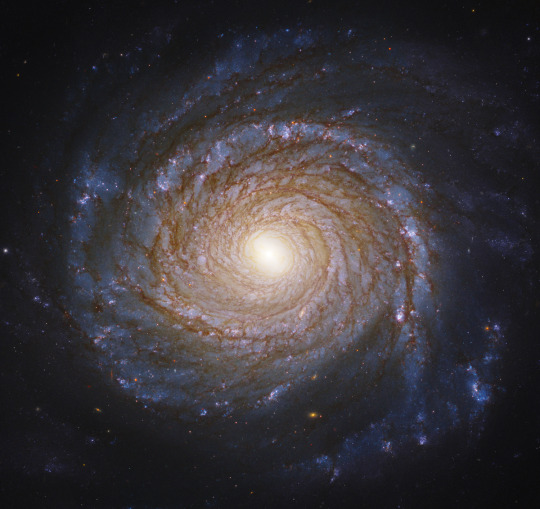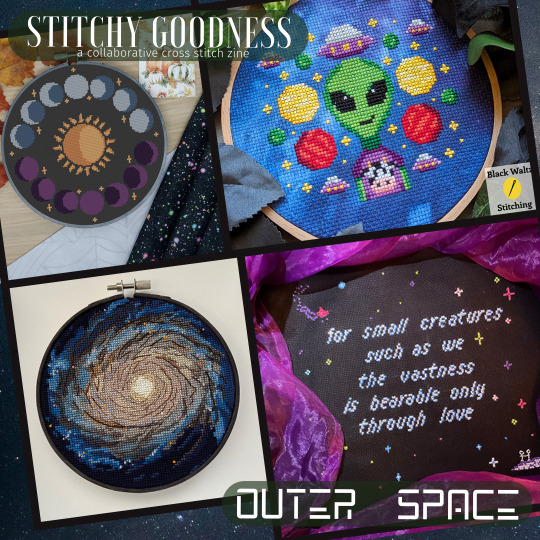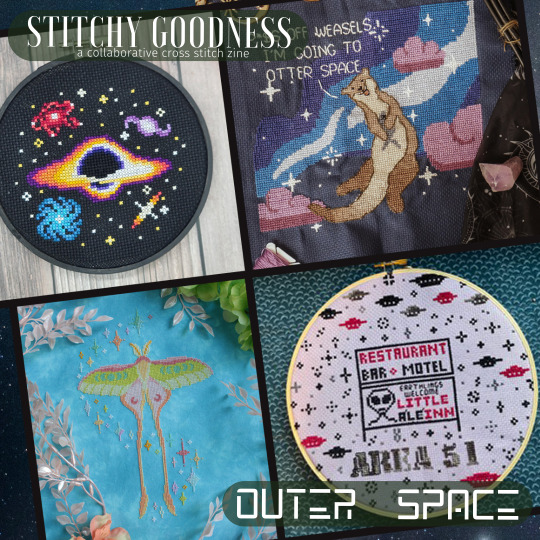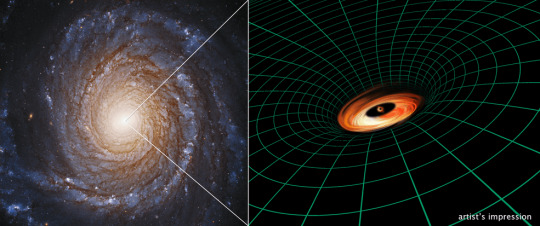#ngc 3147
Explore tagged Tumblr posts
Text

NGC 3147 !
NGC 3147 is a spiral galaxy located in the constellation Draco. It is located at a distance of circa 130 million light years from Earth, which, given its apparent dimensions, means that NGC 3147 is about 140,000 light years across.
It was discovered by William Herschel on April 3, 1785. It is a Type II Seyfert galaxy.
Credit: Hubble Space Telescope
#art#cosmos#cosmic#universe#blast#space#stars#NGC 3147#galaxy#draco#william herschel#seyfert galaxy#hubble space telescope#spiral
47 notes
·
View notes
Text

NGC 3147, Galaxy Rose
852 notes
·
View notes
Text





I'm in the newest Stitchy Goodness zine of cross stitch patterns! The theme was Outer Space, so I came up with "Saturniidae Satellite", a celestial-themed moth based on the Chinese moon moth! The zine is available until February 17, 2024, and includes all 15 patterns pictured here. If it's after that date, you'll have to check with the inidividual designers for availability of patterns. Pattern names and their designers are under the cut!
Monsterous Designs - Phases
Black Waltz Stitching - Alien Friend
Neutrino Stitch - Galaxy NGC 3147
Scornflake GRRRL - Vastness
Pibble Patterns - New Horizons
Stitchy Rin - Uranus
Romy's Creations - I Will Catch the Moon
Cobweb And Rose - Ghost Tours: Mars
Salty Stitchez Studio - Black Hole
Cross Stitch Rattos - Otter Space
Sprouting Lupine - Saturniidae Satellite
Crafy Yams - Area 51
The Stitch Crpyt - Mother Universe
Flossy Fox Shop - Wish Upon A Space Dragon
Snailfish Stitches - Space Glitter
#cross stitch#fiber art#my art#my patterns#stitchy goodness zine#cross stitch patterns#alt text in image#stitchy goodness zine issue 3: outer space
100 notes
·
View notes
Text
Hubble descubre disco de agujero negro que no debería existir NGC 3147 es una galaxia espiral a 130 millones de años luz de la Tierra. La visión clara del cosmos del Hubble le permite capturar detalles como los cúmulos de estrellas azules jóvenes, nebulosas rosadas y franjas de polvo visibles en los brazos tortuosos y elegantes de la galaxia.Créditos: NASANASA, ESA, S. Bianchi (Università degli…

View On WordPress
#Agujeros negros#ASTRONOMIA#Cúmulo estelar#Centro de Vuelo Espacial Goddard#Cosmología#Cosmos#ESA#ESTUDIOS#Galaxias#Hubble#NASA#STScI#Universo
0 notes
Photo

Intriguing Black Hole
49 notes
·
View notes
Text
Hubble uncovers black hole that shouldn't exist
As if black holes weren't mysterious enough, astronomers using NASA's Hubble Space Telescope have found an unexpected thin disk of material furiously whirling around a supermassive black hole at the heart of the magnificent spiral galaxy NGC 3147, located 130 million light-years away.

The conundrum is that the disk shouldn't be there, based on current astronomical theories. However, the unexpected presence of a disk so close to a black hole offers a unique opportunity to test Albert Einstein's theories of relativity. General relativity describes gravity as the curvature of space and special relativity describes the relationship between time and space.
"We've never seen the effects of both general and special relativity in visible light with this much clarity," said Marco Chiaberge of the European Space Agency, and the Space Telescope Science Institute and Johns Hopkins University, both in Baltimore, Maryland, a member of the team that conducted the Hubble study.
"This is an intriguing peek at a disk very close to a black hole, so close that the velocities and the intensity of the gravitational pull are affecting how the photons of light look," added the study's first author, Stefano Bianchi of Università degli Studi Roma Tre, in Rome, Italy. "We cannot understand the data unless we include the theories of relativity."
Black holes in certain types of galaxies like NGC 3147 are malnourished because there is not enough gravitationally captured material to feed them regularly. So, the thin haze of infalling material puffs up like a donut rather than flattening out in a pancake-shaped disk. Therefore, it is very puzzling why there is a thin disk encircling a starving black hole in NGC 3147 that mimics much more powerful disks found in extremely active galaxies with engorged, monster black holes.
"We thought this was the best candidate to confirm that below certain luminosities, the accretion disk doesn't exist anymore," explained Ari Laor of the Technion-Israel Institute of Technology located in Haifa, Israel. "What we saw was something completely unexpected. We found gas in motion producing features we can explain only as being produced by material rotating in a thin disk very close to the black hole."
The astronomers initially selected this galaxy to validate accepted models about lower-luminosity active galaxies -- those with black holes that are on a meager diet of material. Models predict that an accretion disk forms when ample amounts of gas are trapped by a black hole's strong gravitational pull. This infalling matter emits lots of light, producing a brilliant beacon called a quasar, in the case of the most well-fed black holes. Once less material is pulled into the disk, it begins to break down, becomes fainter, and changes structure.
"The type of disk we see is a scaled-down quasar that we did not expect to exist," Bianchi said. "It's the same type of disk we see in objects that are 1,000 or even 100,000 times more luminous. The predictions of current models for gas dynamics in very faint active galaxies clearly failed."
The disk is so deeply embedded in the black hole's intense gravitational field that the light from the gas disk is modified, according to Einstein's theories of relativity, giving astronomers a unique look at the dynamic processes close to a black hole.
Hubble clocked material whirling around the black hole as moving at more than 10% of the speed of light. At those extreme velocities, the gas appears to brighten as it travels toward Earth on one side, and dims as it speeds away from our planet on the other side (an effect called relativistic beaming). Hubble's observations also show that the gas is so entrenched in the gravitational well the light is struggling to climb out, and therefore appears stretched to redder wavelengths. The black hole's mass is around 250 million Suns.
The researchers used Hubble's Space Telescope Imaging Spectrograph (STIS) to observe matter swirling deep inside the disk. A spectrograph is a diagnostic tool that divides light from an object into its many individual wavelengths to determine its speed, temperature, and other characteristics at a very high precision. The astronomers needed STIS's sharp resolution to isolate the faint light from the black-hole region and block out contaminating starlight.
"Without Hubble, we wouldn't have been able to see this because the black-hole region has a low luminosity," Chiaberge said. "The luminosities of the stars in the galaxy outshine anything in the nucleus. So if you observe it from the ground, you're dominated by the brightness of the stars, which drowns the feeble emission from the nucleus."
The team hopes to use Hubble to hunt for other very compact disks around low-wattage black holes in similar active galaxies.
The team's paper will appear online today in the Monthly Notices of the Royal Astronomical Society.
The international team of astronomers in this study consists of Stefano Bianchi (Università degli Studi Roma Tre, Rome, Italy); Robert Antonucci (University of California, Santa Barbara, California); Alessandro Capetti (INAF -- Osservatorio Astrofisico di Torino, Pino Torinese, Italy); Marco Chiaberge (Space Telescope Science Institute and Johns Hopkins University, Baltimore, Maryland); Ari Laor (Israel Institute of Technology, Haifa, Israel); Loredana Bassani (INAF/IASF Bologna, Italy); Francisco Carrera (CSIC-Universidad de Cantabria, Santander, Spain); Fabio La Franca, Andrea Marinucci, Giorgio Matt, and Riccardo Middei (Università degli Studi Roma Tre, Roma, Italy); and Francesca Panessa (INAF Istituto di Astrofisica e Planetologia Spaziali, Rome, Italy).
20 notes
·
View notes
Text
Hubble laat zien dat Seyfert 2 sterrenstelsels helemaal niet bestaan
Hubble laat zien dat Seyfert 2 sterrenstelsels helemaal niet bestaan
Een superzwaar zwart gat omgeven door een donutachtige wolk van gas en stof. Credit: ESA.
Er is een categorie sterrenstelsels die bekend staan als Seyfert sterrenstelsels, vernoemd naar Carl Keenan Seyfert, de astronoom die deze klasse voor eerste identificeerde in 1943. Het zijn spiraalstelsels, die er in zichtbaar licht normaal uit zien, zoals het Andromedastelsel. Maar kijk je er met een…
View On WordPress
1 note
·
View note
Link


Un articolo pubblicato sulla rivista "Monthly Notices of the Royal Astronomical Society: Letters" riporta uno studio su un buco nero supermassiccio circondato da un disco di materiali che ha rivelato caratteristiche inaspettate. Un team di ricercatori guidato da Stefano Bianchi dell'Università degli Studi Roma Tre che include ricercatori di INAF (Istituto nazionale di astrofisica) e ASI (Agenzia Spaziale Italiana) ha usato il telescopio spaziale Hubble per osservare il nucleo della galassia NGC 3147 scoprendo un disco piccolo e tenue, una versione ridotta dei grandi dischi tipici dei nuclei galattici attivi, una struttura che non dovrebbe esistere. La scoperta rappresenta una nuova opportunità per testare alcuni effetti relativistici ma potrebbe costringere gli astronomi a rivedere certi modelli sui nuclei galattici attivi.
0 notes
Photo

Spiral Galaxy NGC 3147 by NASA Hubble
479 notes
·
View notes
Photo


1st image: A representation of the evolution of the universe over 13.77 billion years. The far left depicts the earliest moment we can now probe, when a period of “inflation” produced a burst of exponential growth in the universe. (Size is depicted by the vertical extent of the grid in this graphic.) For the next several billion years, the expansion of the universe gradually slowed down as the matter in the universe pulled on itself via gravity. More recently, the expansion has begun to speed up again as the repulsive effects of dark energy have come to dominate the expansion of the universe. Credit: NASA’s Goddard Space Flight Center
2nd image: This collection of 36 images from NASA’s Hubble Space Telescope features galaxies that are all hosts to both Cepheid variables and supernovae. These two celestial phenomena are both crucial tools used by astronomers to determine astronomical distance, and have been used to refine our measurement of the Hubble constant, the expansion rate of the universe. The galaxies shown in this photo (from top row, left to bottom row, right) are: NGC 7541, NGC 3021, NGC 5643, NGC 3254, NGC 3147, NGC 105, NGC 2608, NGC 3583, NGC 3147, Mrk 1337, NGC 5861, NGC 2525, NGC 1015, UGC 9391, NGC 691, NGC 7678, NGC 2442, NGC 5468, NGC 5917, NGC 4639, NGC 3972, The Antennae Galaxies, NGC 5584, M106, NGC 7250, NGC 3370, NGC 5728, NGC 4424, NGC 1559, NGC 3982, NGC 1448, NGC 4680, M101, NGC 1365, NGC 7329, and NGC 3447. Credit: NASA, ESA, Adam G. Riess (STScI, JHU)
Mystery of Universe’s Expansion Rate: Hubble Data Shows That “Something Weird” Is Going On
Science history will record that the search for the expansion rate of the universe was the great Holy Grail of 20th-century cosmology. Without any observational evidence for space expanding, contracting, or standing still, we wouldn’t have a clue as to whether the universe was coming or going. Furthermore, we wouldn’t have any idea about its age either – or in fact, if the universe was eternal.
The first act of this revelation came when, a century ago, American astronomer Edwin Hubble discovered myriad galaxies outside of our home galaxy, the Milky Way. And, the galaxies weren’t standing still. Hubble found that the farther a galaxy is, the faster it appears to be moving away from us. This could be interpreted as the uniform expansion of space. Hubble even said that he studied the galaxies simply as “markers of space.” However, he was never fully convinced of the idea of a uniformly expanding universe. He suspected his measurements might be evidence of something else more oddball going on in the universe. ...
36 notes
·
View notes
Note
galaxy/space themed stimboard? specifically ngc-3147 but anything works
Sure!
Sources under cut
https://at.tumblr.com/htmlstim/credit-x/iqn7h78byhei
https://at.tumblr.com/noonlight-stims/source/9pil4b16mz2p
https://at.tumblr.com/skeeballtickets/peachslimes/erf29bp30ttu
https://at.tumblr.com/noonlight-stims/source/nawiaxs7kc0z
https://at.tumblr.com/noonlight-stims/glittery-space-stimboard-for-anon-source-source/8ruvi1
#endogenic friendly#endogenic system#endogenic safe#plural system#actually plural#endogenic support#endogenic positivity#system positivity#xenogenic#plural community#stim blog#stimboard#visual stim#outer space
2 notes
·
View notes
Photo

Spiral Galaxy NGC 3147 via /r/spaceporn https://ift.tt/2JvIGAn
0 notes
Photo

NGC 3147, Dusty Spiral
#Astronomy#NASA#Night#Sky#Stars#Space#Science#Universe#Cosmos#Cosmic#Constellations#Constellation#Solar System#Galaxy#Nebula#Spiral#Dust#Rainbow#Bright
1K notes
·
View notes
Photo

Spiral Galaxy NGC 3147
342 notes
·
View notes
Photo

NGC 3147
image credit: Judy Schmidt
1K notes
·
View notes
